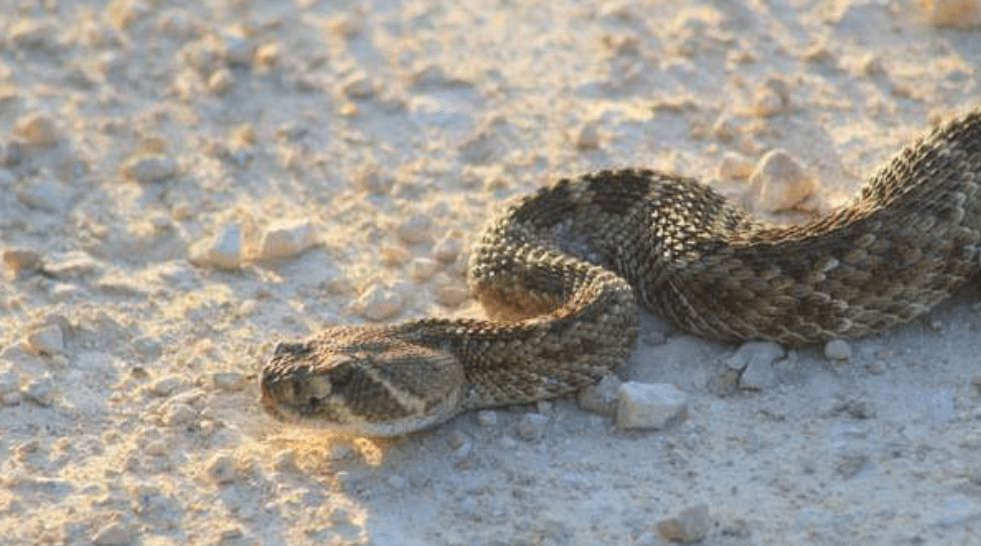
It’s that time of year again, when the rattlesnakes start coming down the hill, looking for mates and places to lay their eggs for the next crop. Last year we had 6 of them here at the house, one of which bit my dog. The dog was fine, fortunately, probably because he had got the rattlesnake shot from the vet a few days before, but I am still not over it. I wear boots outside, pay attention (maybe to the point of being paranoid) to the ground and keep a shovel handy. Bad as the snakes can be, at least we have an antivenom if the worst were to happen. Of course, people in the past did not.
A young child who took a bite out near the Jim Ned more than a century ago was in a harrowing situation. The story of his trial was written up by local historian Leona Banister Bruce for the old Santa Anna newspaper. It’s from a clipping I found in a box which has no date on it, but I think Mrs. Bruce must have written the article sometime around 1970. The incident itself must have taken place in the late 1850s or early 60s from what I can tell.
The Brooke family had recently arrived in this area, and had purchased some land along the Jim Ned Creek, in what was then Brown County. Mrs. Brooke was hanging laundry on a hillside, while her 18-month-old toddler followed her along, when he stepped on a small rattlesnake. The mother was able to grab the child before the creature struck again, but the damage was done. The poor little guy kept screaming “grass-bur, grass-bur,” thinking he had stepped on a sticker, but the reality was much worse. Not knowing what to do, Mr. Brooke rode for a neighbor, who blew his hunting horn to alert everyone living along the Jim Ned Creek that there was trouble. A chain of hunting horn alarms was raised, and neighbors came from miles around to discover the problem and offer help. It seems everyone had a remedy.
The bitten foot was immersed in coal-oil. It was tied up with a cord. A tobacco juice poultice was placed on the bite. The wound was cut open in an attempt to drain the poison. One helpful neighbor swore that the fresh carcass of a black hen, cut in half and placed on the bite, would draw the poison out–it had to be a black hen though, not brown or white and so a search for a black hen commenced. One man believed he could find a suitable fowl, and took off from the Brooke ranch in a wild ride across the area to obtain the bird. He returned with the correctly colored chicken, and this remedy was added to the others that had been tried by the panicked parents.
Despite the application of the hen, the poor child became very sick and swollen, his body was discolored, and he suffered terribly. That part was hard to read about, but reality was there was not much people could do for a snakebite at that time. The community took turns at the Brooke place, cooking, cleaning and helping to care for the boy, trying to distract him from his painful plight. Everyone felt sympathy, and must have been aware that the same fate could easily happen to any one of them or their children. The consensus seemed to be that the Brooke boy would die from the bite, as the article mentions some people were afraid to ask about the boy’s condition for fear of hearing the worst.
After a terrible week, however, the child began to recover, and even became playful, much to the rejoicing of his family and friends. The boy was not crippled by the bite, nor did he sustain any long-term injuries from it. Many believed this was a miracle, as grown men had died from less than what this small boy had endured. There were some who credited his unexpected recovery solely to the use of the black hen’s carcass. Who knows, maybe it did some good. I have heard of putting raw meat on a bruise and that working a bit. Still, as the snake season gets rolling once again, I’m awfully glad we have antivenom instead.
***
Diane Adams is a local journalist whose columns appear Thursdays on BrownwoodNews.com
